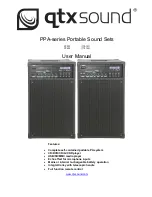
Zynq Ult VCU TRD User Guide
23
UG1250 (v2019.1) May 29, 2019
Chapter 3:
APU Software Platform
Video
To model and control video capture pipelines such as the ones used in this TRD on Linux
systems, multiple kernel frameworks and APIs must work in concert. For simplicity, the
overall solution is referred to as Video4Linux (V4L2), although the framework only provides
part of the required functionality. Individual components are discussed in the following
sections.
Driver Architecture
shows the VL42 driver stack (a generic V4L2 driver model of a video pipeline).
The video pipeline driver loads the necessary subdevice drivers and registers the device
nodes it needs, based on the video pipeline configuration specified in the device tree. The
framework exposes the following device node types to user space to control certain aspects
of the pipeline:
• Media device node:
/dev/media*
• Video device node:
/dev/video*
• V4L subdevice node:
/dev/v4l-subdev*
Note:
The * means [0 . . .n], e.g.,
/dev/media1
,
/dev/media2
, and so on.
These steps describe the data flow within software:
1. The V4L2 source driver allocates frame buffer for the capture device.
2. The V4L2 framework imports/exports the DMA_BUF file descriptor (FD) to the next
GStreamer element.
3. The encoder reads the source buffer from the capture device, encodes it, and writes the
encoded bitstream to a bitstream buffer. The encoded bitstream does not use DMA_BUF
framework for sharing the buffer.
4. The decoder allocates a decoded frame buffer, reads the bitstream buffer, and writes the
decoded frame buffer into memory.
5. The decoder shares the decoded frame buffer using the DMA_BUF framework with the
DRM display device.
















































